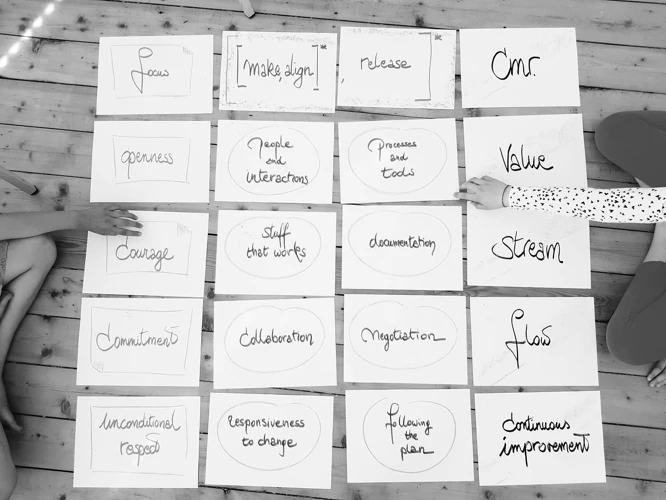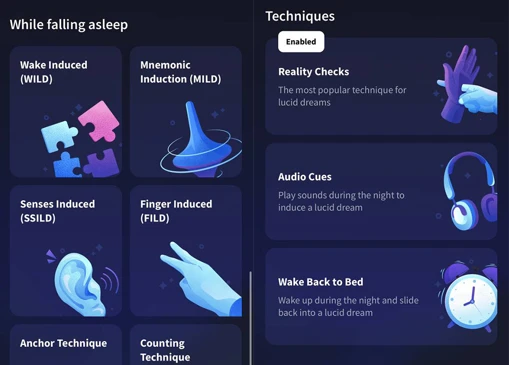Have you ever wondered what it would be like to have complete control over your dreams? To be able to consciously explore and shape the world of your imagination while you sleep? If so, you’re not alone. Lucid dreaming, the act of becoming aware that you are dreaming while still in the dream state, is a phenomenon that has captivated the curiosity of scientists, philosophers, and dream enthusiasts for centuries. In this article, we will delve into the role that reality checks play in inducing lucid dreams, exploring the different types of reality checks, how they work, and how they can be leveraged to enhance your lucid dreaming experience. Get ready to unlock the hidden potential of your dreams and embark on a journey of self-discovery and adventure like never before.
What are Lucid Dreams?

Lucid dreams are a fascinating and unique state of consciousness where the dreamer becomes aware that they are dreaming while still in the dream. This awareness allows individuals to have a sense of control and volition within their dreams, enabling them to actively participate and manipulate the dream environment. During a lucid dream, the dreamer may have the ability to change the dream scenery, interact with dream characters, and even engage in extraordinary experiences that defy the laws of reality. These dreams can be vivid and realistic, often indistinguishable from waking life. While lucid dreaming typically occurs during REM sleep, it can also spontaneously arise during other stages of sleep or even during daytime naps. Lucid dreaming offers an exciting opportunity for self-exploration, creativity, and personal growth. Whether you’re interested in adventurous escapades or wish to delve into the depths of your subconscious mind, lucid dreams can provide a gateway to extraordinary experiences. However, it’s important to note that lucid dreaming is different from sleep disorders such as sleep paralysis and spontaneous lucid dreaming. To learn more about the role of sleep in lucid dreaming, you can read our article on the role of sleep in lucid dreaming.
The Significance of Lucid Dreaming

Lucid dreaming holds significant importance for several reasons. Firstly, it offers a unique opportunity for self-exploration and personal growth. In a lucid dream, individuals can confront their fears, work through unresolved issues, and gain valuable insights into their subconscious mind. The ability to consciously control and direct the dream experience can lead to a greater sense of self-awareness and empowerment. Lucid dreaming can be a source of inspiration and creativity. Artists, writers, and inventors often tap into their lucid dreams for innovative ideas and solutions to creative challenges. Additionally, lucid dreams can provide a platform for practicing and honing real-life skills. Athletes, for example, can mentally rehearse their performances in their dreams, enhancing muscle memory and boosting overall performance. Lucid dreams can be a source of pure enjoyment and adventure. From flying through the sky to visiting fantastical landscapes, the possibilities within a lucid dream are limited only by imagination. To enhance your lucid dreaming experience, you may consider incorporating aromatherapy as a complementary practice, which can be explored further in our article on aromatherapy and lucid dreaming.
Understanding Reality Checks

Reality checks are a crucial tool in the practice of inducing lucid dreams. They serve as a prompt or trigger to help us become aware of whether we are dreaming or in a waking state. This self-awareness is essential for recognizing the dream state and gaining control over our dreams. Reality checks can take various forms, but they all share the common goal of questioning our reality and testing whether we are in a dream or waking life. One popular reality check method involves looking at digital devices, such as clocks or phone screens, and observing if the time appears distorted or inconsistent. Another approach is performing physical tests, like trying to push a finger through the palm of the opposite hand or pinching oneself gently to see if it feels different than in waking life. Nature-based reality checks involve attuning oneself to the environment, looking for anomalies, and questioning if the surroundings are truly real. These reality checks can include examining the sky, the appearance of plants, or the behavior of animals. By regularly engaging in reality checks throughout the day, we cultivate a habit of questioning our reality and increasing our chances of carrying out these checks within our dreams. To learn more about different techniques for lucid dream induction, you can read our article on the benefits and drawbacks of binaural beats for lucid dream induction.
How Reality Checks Work

Reality checks are a powerful technique used to induce lucid dreams by prompting individuals to question their reality and determine whether they are dreaming or awake. But how do reality checks work? Well, the effectiveness of reality checks lies in the concept of habit formation, mindfulness, and dream recall. When performed regularly during waking hours, reality checks become ingrained in our subconscious mind, making it more likely that we will automatically perform them during dreams. These checks serve as critical triggers that prompt us to question the reality of our dreams, leading to moments of lucidity. There are various types of reality checks, including digital reality checks, nature-based reality checks, and body-focused reality checks, each engaging different senses and providing unique cues for dream recognition. By incorporating reality checks into our daily routines and practicing them with mindfulness and awareness, we can enhance our chances of becoming lucid in our dreams and unlocking the limitless potential of our subconscious minds.
Mindfulness and Awareness
Mindfulness and awareness are crucial elements in the practice of reality checks and inducing lucid dreams. By cultivating a state of mindfulness, individuals develop a heightened sense of self-awareness that extends to their dream experiences. One way to enhance mindfulness is through regular meditation practice. Meditation trains the mind to observe thoughts and sensations without judgment, fostering a greater ability to recognize the dream state.
To incorporate mindfulness into reality checks, it is important to approach the practice with intention and presence. Rather than simply going through the motions of a reality check, individuals should engage their senses and actively question their reality. For example, during a reality check, one might ask themselves, “Am I dreaming? What evidence is there to support that?”
Additionally, maintaining awareness throughout the day can also contribute to the effectiveness of reality checks. Engaging in mindfulness exercises like sensory awareness or body scans can help individuals stay present and attentive to their surroundings. By being more attuned to the present moment, individuals may be more likely to notice peculiarities or inconsistencies that can trigger lucidity in dreams.
Mindfulness and awareness serve as foundational practices in the realm of lucid dreaming. By nurturing a state of mindfulness and maintaining heightened awareness, individuals can cultivate the necessary mindset to recognize and investigate their dream states, ultimately leading to more frequent and immersive lucid dream experiences.
The Role of Habits
The role of habits in inducing lucid dreams is crucial. Habits are deeply ingrained behaviors that we perform automatically and unconsciously. When it comes to lucid dreaming, cultivating certain habits can greatly increase the likelihood of having lucid dreams. One important habit is regularly performing reality checks throughout the day. A reality check is a simple action or observation that helps you determine whether you are dreaming or awake. By making reality checks a habit, you condition your mind to question the nature of reality, even while you are dreaming. This habit transfers into your dreams, where you will instinctively perform reality checks out of habit. For example, a common reality check is to count your fingers. During the day, you can regularly count the number of fingers on your hand while asking yourself, “Am I dreaming?” Eventually, this habit will carry over into your dreams, and when you count your fingers, you may notice that you have more or fewer than the usual five digits, alerting you to the fact that you are dreaming. Developing these habits takes time and consistency, but with persistence, you can train your mind to recognize the dream state more readily, leading to more frequent lucid dreams.
Building Dream Recall
Building dream recall is an essential aspect of lucid dreaming. When we are able to remember our dreams in detail, it becomes easier to recognize the patterns and signs that indicate we are in a dream. Here are some strategies that can help improve dream recall:
- Keep a dream journal: Keeping a dream journal by your bedside allows you to immediately jot down any dream fragments or memories as soon as you wake up. This practice helps train your brain to prioritize and remember dreams. Take a few minutes in the morning to write down everything you can remember, no matter how small or insignificant it may seem.
- Set an intention: Before going to sleep, set an intention to remember your dreams. Repeat to yourself that you will remember your dreams upon waking. This simple affirmation can have a powerful effect on your dream recall.
- Create a bedtime routine: Establish a consistent bedtime routine that includes relaxation techniques such as meditation or gentle stretching. This can help calm the mind and create a conducive environment for vivid dreaming.
- Avoid alcohol and certain medications: Alcohol and some medications can interfere with the sleep cycle and suppress dream recall. If possible, try to limit or avoid these substances to enhance your ability to remember dreams.
- Wake up gradually: Instead of jolting out of bed as soon as the alarm goes off, take a moment to lie still and reflect on your dreams. Often, dream memories are more accessible in the moments directly after waking up.
- Practice visualization: Throughout the day, take a few moments to visualize and imagine your dreams. Picture yourself recalling the details and emotions of the dream. This technique can prime your mind to remember dreams more easily.
By incorporating these strategies into your daily routine, you can significantly improve your dream recall abilities, leading to a greater likelihood of recognizing when you are in a dream state. Building dream recall is an important step toward achieving lucid dreams and gaining control over your nighttime adventures.
Types of Reality Checks

Reality checks come in various forms and can be tailored to suit individual preferences and lifestyles. One type of reality check is the digital reality check, which involves looking at a digital device or clock and then looking away and back again to see if the numbers change or if the text becomes distorted. Another popular type is nature-based reality checks, such as looking at the sky to see if it behaves strangely or observing the patterns of leaves or water to determine if they remain consistent. Additionally, body-focused reality checks involve performing physical actions, such as trying to push a finger through the palm of the hand or pinching oneself to see if it results in any peculiar sensations. Regardless of the type chosen, regularly practicing and incorporating these reality checks into your daily routine can significantly increase the chances of becoming lucid during dreams.
Digital Reality Checks
Digital reality checks are a modern and innovative approach to inducing lucid dreams. In a world where technology is an integral part of our lives, utilizing digital tools for reality checks can be convenient and effective. One popular method is using smartphone apps specifically designed to remind users to perform reality checks throughout the day. These apps often use gentle vibrations or notifications to prompt individuals to question their reality. Some apps even allow users to set custom intervals for when they want to receive these reminders. Another digital reality check technique involves using digital clocks or watches. Throughout the day, individuals can frequently check the time and then double-check it to see if it has changed. In dreams, digital devices tend to behave differently, and the numbers on clocks and watches may appear fuzzy, distorted, or constantly changing. This inconsistency can serve as a sign that the individual is in a dream state. Digital reality checks provide a convenient and accessible way to incorporate reality checking into daily routines, increasing the chances of inducing lucid dreams.
Nature-Based Reality Checks
Nature-based reality checks are a type of reality check technique that involves using elements from the natural world to determine whether you are in a dream or reality. These reality checks capitalize on the fact that our dreams often contain elements that are surreal or impossible in everyday life. By incorporating nature into your reality checks, you can train your mind to recognize dream signs and increase your chances of becoming lucid.
One nature-based reality check is the “finger through the palm” technique. To perform this check, simply press your finger against your palm as if you are trying to push it through. In a dream, your finger may actually pass through your palm, giving you a clear indication that you are in a dream state. Another nature-based reality check is observing the behavior of animals. In dreams, animals may exhibit strange or illogical behaviors that don’t happen in reality. Take a moment to observe the behavior of animals around you and see if anything seems out of the ordinary.
You can also incorporate natural elements like water into your reality checks. In dreams, water often behaves differently than it does in reality. Try splashing water on your face or placing your hand in a body of water and observe how it feels or reacts. If the water behaves unusually, it’s likely that you are in a dream.
Another nature-based reality check involves focusing on the details of plants and trees. In dreams, plants may appear distorted or have peculiar characteristics. Take a close look at the leaves, flowers, or branches of plants around you and see if anything seems exaggerated or unrealistic.
By integrating nature-based reality checks into your routine, you can develop a heightened sense of awareness and train your mind to recognize dream signs. Remember to perform these reality checks regularly throughout the day and genuinely question your reality. With practice and consistency, you’ll increase your chances of achieving lucid dreams and unlocking the full potential of your dream world.
Body-Focused Reality Checks
Body-focused reality checks are a powerful technique used in lucid dreaming to cultivate self-awareness and distinguish between the dream state and waking life. These reality checks involve observing and investigating physical sensations in order to discern whether you are dreaming or awake. One popular body-focused reality check is the “finger through palm” method. To perform this reality check, you can try pushing your finger through the palm of your hand. In a dream, you may find that your finger easily passes through your palm, highlighting the dreamlike nature of the experience. Another body-focused reality check is the “nose pinch” method. This involves plugging your nose and trying to breathe. In a dream, you may discover that you are still able to breathe, even with your nose pinched. This peculiar experience can serve as a clear sign that you are in a dream. By incorporating body-focused reality checks into your daily routine and practicing them regularly, you will enhance your ability to recognize the subtle cues and anomalies that indicate you are in a dream state. Remember to approach these reality checks with genuine curiosity and open-mindedness, allowing yourself to question the reality of your surroundings. With consistent practice and a heightened sense of body awareness, you will increase your chances of achieving lucidity in your dreams.
Performing Reality Checks

Performing reality checks is a crucial step in inducing lucid dreams. By regularly questioning the nature of reality throughout the day, dreamers develop a habit of critical awareness that can carry over into their dream state. To effectively perform reality checks, it is important to develop a routine that incorporates these checks into daily life. This routine can consist of setting reminders or triggers, such as checking the time on a clock or looking at your hands, which serve as cues to question your reality. It is essential to approach reality checks with a mindset of curiosity and genuine skepticism. Additionally, incorporating mindfulness into reality checking can significantly enhance their effectiveness. By being fully present and engaged in the moment during a reality check, dreamers can sharpen their awareness and increase the likelihood of recognizing discrepancies that indicate they are in a dream. Remember, persistence and consistency are key when it comes to reality checking. The more frequently and habitually you perform reality checks, the greater the chances of inducing lucid dreams and unlocking the boundless potential of your dream world.
Developing a Routine
Developing a routine is crucial when it comes to incorporating reality checks into your daily life and increasing your chances of inducing lucid dreams. Consistency is key in training your mind to question reality and cultivate a habit of reality checking. Here are some steps you can take to develop an effective routine:
1. Set a specific time: Choose a time during the day when you will perform your reality checks consistently. It could be upon waking up, before going to bed, or at regular intervals throughout the day.
2. Choose a trigger: Select a specific event or cue that will remind you to perform a reality check. It could be something as simple as seeing a particular object, hearing a certain sound, or even when you encounter a dream-related symbol.
3. Decide on reality checks: Determine the reality checks you will perform during your routine. It’s important to choose checks that are reliable and easily distinguish between waking life and dream states. Some common reality checks include checking the time, reading text, attempting to push your finger through your palm, or trying to levitate.
4. Perform the reality check: When your chosen trigger occurs, initiate the reality check. Engage fully in the action and genuinely question whether you are dreaming or not. Pay attention to any unusual or inconsistent aspects of the environment that may indicate a dream.
5. Reflect and reinforce: After each reality check, take a moment to reflect on the results. If you were in a dream, acknowledge the lucidity and any particular dream signs you noticed. If you were in waking life, reassure yourself that you are indeed awake. This reflection helps reinforce the habit and trains your mind to be more aware.
Remember, the key to developing a routine is consistency and perseverance. The more regularly you practice reality checks, the more likely they will become ingrained in your subconscious mind. With time and dedication, performing reality checks will become second nature, increasing your chances of becoming lucid within your dreams.
Incorporating Reality Checks into Daily Life
Incorporating reality checks into your daily life is a key strategy for increasing your chances of experiencing lucid dreams. By regularly performing reality checks during waking hours, you train your mind to question reality and carry that habit into your dreams. Here are some effective ways to incorporate reality checks into your daily routine:
- Set reminders: Place reminders in your environment, such as sticky notes on your desk or phone alarms, to prompt you to do reality checks throughout the day. These reminders serve as triggers to pause and question your surroundings.
- Tie reality checks to daily activities: Associate reality checks with routine activities, such as checking the time, entering a new location, or encountering specific objects. For example, each time you walk through a doorway, ask yourself, “Am I dreaming?” and perform a reality check.
- Use digital prompts: Utilize smartphone apps or websites that send random reality check notifications. These digital prompts can help reinforce the habit of questioning reality throughout the day.
- Practice reflection: Take moments throughout the day to reflect on your experiences and surroundings. Ask yourself if anything feels strange or out of the ordinary. Cultivating awareness and mindfulness in these moments can carry over into your dreams.
- Engage in reality check rituals: Develop specific gestures or rituals that accompany your reality checks. For example, you could pinch your nose and try to breathe through it or attempt to push a finger through your palm. By creating consistent and deliberate actions, you reinforce the habit and increase the chances of performing reality checks in your dreams.
Remember, the key is to perform reality checks consistently, even when you are confident you are awake. Over time, this practice will become ingrained in your subconscious and carry over into your dreams, increasing the likelihood of experiencing lucidity. By incorporating reality checks into your daily life, you open the door to extraordinary dream adventures and heightened self-awareness.
Tips for Effective Reality Checking
To make the most out of your reality checking practice and increase your chances of inducing lucid dreams, here are some helpful tips to keep in mind:
- Question Your Reality: When performing a reality check, don’t just go through the motions. Take a moment to genuinely question whether you are in a dream or awake. Develop a healthy skepticism about your surroundings and critically assess the details of your environment.
- Engage your Senses: Reality checks are most effective when you actively engage your senses. Look closely at your surroundings and observe the details, touch objects and notice how they feel, and pay attention to any sounds or smells. By fully immersing yourself in the present moment, you increase the likelihood of realizing that you are in a dream.
- Perform Regular Checks: Consistency is key when it comes to reality checking. Make it a habit to perform reality checks throughout the day, ideally at set intervals such as every hour or whenever you encounter a dream-like situation. By repeating this behavior, you train your mind to perform reality checks in your dreams as well.
- Use Different Techniques: Experiment with various reality check techniques to find what works best for you. Some popular methods include checking the time or text on a digital device, attempting to push a finger through your palm, looking at yourself in a mirror, or trying to levitate. Find a technique that resonates with you and incorporate it into your reality checking routine.
- Create Visual Reminders: Place visual cues or reminders around your environment to prompt reality checks. This could be as simple as setting a screensaver on your phone or computer with a message like “Am I Dreaming?” or placing sticky notes in prominent locations. These visual reminders serve as triggers to question your reality regularly.
- Combine Reality Checks with Mindfulness: Remember that reality checking is not just about the action itself, but also about cultivating a state of mindfulness and awareness. Practice being fully present in your waking life, using mindfulness techniques such as meditation and deep breathing. This heightened awareness can carry over into your dreams, making it easier to recognize when you are dreaming.
By incorporating these tips into your reality checking routine, you can strengthen your chances of having lucid dreams and embarking on exciting dream adventures. Remember, it may take time and persistence to develop the habit, but the rewards of lucid dreaming are well worth the effort.
Leveraging Reality Checks for Lucid Dreaming

Leveraging reality checks is a powerful technique for enhancing the frequency and intensity of lucid dreaming experiences. By incorporating reality checks into your daily routine, you can train your brain to question whether you are dreaming or awake, increasing the likelihood of becoming lucid within your dreams. Creating a reality check habit involves performing simple actions or observations throughout the day, such as looking at your hands, checking the time, or trying to push your finger through your palm. These reality checks serve as a reality indicator, and when performed consistently, they become ingrained in your subconscious mind. Reality checks can also act as dream signposts, helping you identify common themes or anomalies in your dreams that can serve as cues for lucidity. Additionally, reality checks can contribute to dream stability by grounding you in the present moment and promoting mindfulness and awareness. As induction methods, reality checks can establish an intention to become lucid in your dreams, creating a mental framework that primes your mind to recognize the dream state. By combining reality checks with other techniques like maintaining a dream journal and practicing mindfulness, you can optimize your chances of experiencing lucid dreams and unlock the boundless potential of your dream world.
Creating a Reality Check Habit
Creating a reality check habit is an essential step towards inducing lucid dreams. By performing reality checks regularly throughout the day, you train your mind to question the nature of reality, which can then carry over into your dreams. Here are some strategies to help you establish a reality check habit:
- Set reminders: Place reminders in your environment, such as sticky notes or alarms on your phone, to prompt you to perform reality checks at specific intervals. This will help reinforce the habit and increase your chances of doing them consistently.
- Choose trigger events: Associate reality checks with specific events or situations that occur regularly throughout your day. For example, every time you walk through a doorway, see a clock, or encounter a certain person, perform a reality check.
- Use reality check apps: Utilize smartphone apps specifically designed to remind you to do reality checks. These apps provide customizable features and can send notifications at predetermined intervals to prompt you to perform a reality check.
- Keep a reality check journal: Maintain a journal where you record your reality check experiences. This can help you identify patterns, track your progress, and stay motivated in your lucid dreaming journey.
Remember, consistency is key when developing a reality check habit. It may take time and patience to make it a natural part of your routine. With practice and persistence, you’ll increase your chances of experiencing lucid dreams and embark on exciting dream adventures.
Reality Checks as Dream Signposts
Reality checks serve as valuable dream signposts to help you recognize when you are in a dream state. By regularly performing reality checks throughout the day, you’re training your brain to question reality and establish a habit of critically assessing your surroundings. When this habit carries over to your dreams, it can trigger a moment of realization that you are in a dream. But how exactly do reality checks act as dream signposts?
1. Questioning Reality: Reality checks prompt you to question whether you are dreaming or awake. They disrupt the automatic assumption that you are in a waking state and encourage a sense of skepticism about your current experience.
2. Inconsistencies and Surreal Elements: During a reality check, you may observe inconsistencies or surreal elements that are commonly found in dreams. For example, you might try to read a page of text in a dream and find that the words continually change or make no sense. These anomalies can serve as strong indications that you are, in fact, in a dream.
3. Altered Laws of Physics: Dreams often involve bizarre physics that defy the laws of the waking world. A reality check, such as trying to fly or passing your hand through a solid object, can reveal if you are subject to these dream-like physics.
4. Confirmation of Dream State: When a reality check confirms that you are in a dream, it provides an immediate signpost that triggers lucidity. By regularly practicing reality checks during wakefulness, you increase the likelihood of conducting them in your dreams, leading to more frequent lucid dream experiences.
Remember, the effectiveness of reality checks as dream signposts relies on consistency and awareness. Make it a habit to perform reality checks throughout your waking hours, and eventually, they will spill over into your dreams, helping you step into the world of lucid dreaming.
Reality Checks as Dream Stability Techniques
Reality checks can serve as effective dream stability techniques, helping to maintain the clarity and stability of a lucid dream once achieved. When one becomes lucid within a dream, it can be an exhilarating experience that triggers heightened awareness and excitement. However, this heightened state of consciousness can sometimes lead to a loss of stability, causing the dream to fade or collapse. This is where reality checks play a crucial role. By performing reality checks within the dream, the dreamer reaffirms their lucidity and strengthens their connection to the dream world. One common reality check technique is to examine your surroundings and question the reality of the environment. Look for inconsistencies, such as nonsensical objects or distorted proportions. Another technique involves checking the time or reading a piece of text, as these elements tend to change or become distorted in dreams. By regularly performing these reality checks, the dreamer develops a habit of critically assessing their dream state, which improves stability and allows for a longer and more vivid lucid dreaming experience. Reality checks can serve as anchor points within the dream, anchoring the dreamer’s consciousness and preventing them from slipping back into non-lucid dreaming. Emphasizing the use of reality checks as dream stability techniques ensures that the dreamer remains grounded and in control, maximizing the potential for lucid exploration and enjoyment.
Reality Checks as Induction Methods
Reality checks can be powerful tools for inducing lucid dreams. When used as induction methods, reality checks serve as triggers to activate the dreamer’s awareness during the dream state. The idea behind using reality checks as an induction technique is to habitually perform these checks throughout the day, which then carries over into our dreams, where we continue to perform them out of habit. This increases the likelihood of recognizing the dream state and becoming lucid.
There are several reality check techniques that can be used as induction methods:
1. Hand Check: One popular reality check involves examining your hands while asking yourself, “Am I dreaming?” In dreams, hands often appear distorted or have extra fingers. By making a habit of regularly checking your hands during waking hours, you will naturally perform this check in your dreams, increasing the chances of becoming lucid.
2. Nose Pinch Check: Another effective reality check is pinching your nose and attempting to breathe through it. In reality, you won’t be able to breathe with a pinched nose, but in a dream, you can still breathe normally. This disparity can act as a trigger for lucidity.
3. Mirror Check: Looking at yourself in a mirror during a reality check can yield interesting results in lucid dreams. Often, reflections in dreams may appear distorted, blurry, or even nonexistent. Taking the time to look at yourself in a mirror throughout the day can help train your mind to perform this check in dreams as well.
4. Digital Watch Check: Using a digital watch or clock as a reality check involves looking at the time, looking away, and then looking back again. In dreams, the time on digital displays tends to be inconsistent or nonsensical. By regularly checking the time on your digital watch while awake, you’ll increase the likelihood of spotting discrepancies in dream scenarios.
Remember, the key to using reality checks as induction methods is to establish a habit of performing them consistently throughout the day. Over time, this habit will carry over into your dreams, increasing your chances of achieving lucidity. By combining reality checks with other lucid dream induction techniques and maintaining a dream journal, you can enhance your lucid dreaming practice and unlock incredible adventures within the realm of your own mind.
Combining Techniques: Reality Checks and Dream Journals

Combining reality checks with dream journals is a powerful technique for enhancing lucid dreaming experiences. Reality checks help cultivate the habit of critically questioning one’s reality, increasing the likelihood of becoming lucid during a dream. Dream journals, on the other hand, serve as a means of documenting and analyzing dream content, aiding in the development of dream recall and lucidity. By utilizing these two techniques together, dreamers can maximize their chances of having lucid dreams and deepen their understanding of their dream world. When performing a reality check, it is important to make a habit of recording the results of the check in a dream journal. This allows for later analysis of patterns and themes that may signal dreaming states. By cross-referencing reality checks with the dream journal, dreamers can identify recurring dream signs and triggers for lucidity. Additionally, recording dreams in a journal helps strengthen the connection between the waking and dreaming mind, facilitating a greater level of self-awareness and intentionality within dreams. So, grab a dream journal and start incorporating reality checks into your daily routine to unlock the transformative potential of lucid dreaming.
Writing Down Reality Check Results
Writing down the results of your reality checks is an essential practice that can greatly enhance your lucid dreaming journey. After performing a reality check, take a moment to record your findings in a dream journal or a dedicated note-taking app. This serves two purposes: It reinforces the habit of reality checking and helps build a strong connection between the waking and dreaming states. When you write down the results, be detailed and specific. Describe the reality check technique you used, whether it was successful or unsuccessful, and any thoughts or observations you had during the process. For example, if you performed a digital reality check by trying to push your finger through the palm of your hand, note whether your finger went through or not, and how it felt. This level of detail will provide valuable feedback and contribute to your overall self-awareness. Additionally, by reviewing your reality check records regularly, you may start noticing patterns and recurring themes that can serve as dream signs, helping you to identify when you are dreaming. Remember to date each entry, as this can further aid in recognizing dream patterns over time. So, make it a habit to write down your reality check results promptly after each attempt, and watch as your dream recall and lucidity increase, bringing you closer to becoming a proficient lucid dreamer.
Analyzing Patterns and Themes
When it comes to analyzing patterns and themes in your dream journal, there are several techniques you can use to gain insight into your dreams and increase your chances of having lucid dreams. One approach is to create a table or list where you can record common elements that occur in your dreams. This could include recurring symbols, locations, people, or emotions. By identifying these patterns, you can start to recognize dream signs that may indicate when you are dreaming. For example, if you notice that you frequently dream about flying, seeing a certain color, or being in a specific place, these can serve as indicators that you are in a dream and trigger a reality check. Additionally, pay attention to themes or recurring narratives in your dreams. Are there any recurring storylines or events that consistently appear? Are there any emotions or conflicts that re-emerge in your dreams? Analyzing these patterns and themes can provide valuable insights into your subconscious mind and help you recognize when you are in a dream state. By understanding the common elements and themes in your dreams, you can develop a greater level of self-awareness and increase your ability to achieve lucidity. So, start identifying those patterns and themes and use them as guideposts on your journey towards lucid dreaming success.
Enhancing Dream Recall and Lucidity
Enhancing dream recall is crucial for increasing the chances of having lucid dreams and maintaining clarity within them. One effective way to improve dream recall is through the use of a dream journal. Keeping a dream journal helps cultivate a habit of actively remembering and recording dreams upon waking up. As soon as you wake up, take a moment to reflect on your dreams and jot down any key details or vivid experiences. Include specific elements like people, places, emotions, and events to provide a comprehensive account of your dreams. By consistently recording your dreams, you signal to your subconscious mind that dreams are important to you, which can increase the likelihood of having lucid dreams. Additionally, reviewing past entries in your dream journal can help you identify recurring dream signs or patterns that may serve as triggers for lucidity. Not only does a dream journal aid in dream recall, but it also serves as a tool for self-reflection and self-discovery. It allows you to explore the intricate landscapes of your subconscious mind, uncover hidden thoughts and emotions, and gain insights into your personal psyche. So grab a notebook, keep it by your bedside, and make it a habit to record your dreams every morning. You’ll be amazed at how it enhances your dream recall and opens the doors to lucid adventures in the realm of your dreams.
Common Mistakes with Reality Checks
When it comes to reality checks, there are some common mistakes that many aspiring lucid dreamers make. One of the most prevalent mistakes is inconsistency and lack of persistence. Reality checks need to be performed regularly, not just sporadically, in order to increase the chances of becoming lucid. Another mistake is over-reliance on a single reality check. It’s important to use a variety of reality checks to increase the effectiveness and reliability of inducing lucid dreams. Additionally, not utilizing mindfulness in reality checking can hinder the success of becoming lucid. Mindfulness plays a crucial role in observing and questioning one’s reality, so incorporating this practice into reality checks can greatly enhance lucid dreaming experiences. Avoiding these common mistakes can improve the effectiveness of reality checks and increase the likelihood of achieving lucidity in your dreams.
Inconsistency and Lack of Persistence
Inconsistency and lack of persistence can hinder the effectiveness of reality checks in inducing lucid dreams. One common mistake is not incorporating reality checks into a regular routine. To maximize the chances of becoming lucid in your dreams, it’s important to make reality checking a habit. Consistency is key. Set reminders throughout the day to perform reality checks, such as when you see a specific object or experience a certain sensation. By repeatedly questioning your reality, you increase the likelihood of carrying that habit into your dreams. Another mistake is giving up too soon. Lucid dreaming can take time and practice. It’s essential to remain persistent, even if you aren’t immediately successful. The more you engage in reality checks, the more they become ingrained in your subconscious mind. Over time, this increased awareness of your waking state will carry over into your dream state, increasing the likelihood of realizing that you are dreaming. So, don’t get discouraged if you don’t achieve lucidity right away. Keep reminding yourself to reality check consistently and persistently, and the rewards will come. Remember, lucid dreaming is a skill that can be developed with patience and dedication.
Over-reliance on a Single Reality Check
Over-relying on a single reality check can be a common mistake when attempting to induce lucid dreams. While reality checks are valuable tools for increasing self-awareness and triggering lucidity, relying solely on one method can limit the effectiveness of your practice. The issue with putting all your faith in a single reality check is that it may not always work in every dream scenario. Dreams can be unpredictable and fluid, and certain reality checks may fail to yield accurate results within the dream context. It’s crucial to understand that different reality checks may have varying success rates depending on the individual and the specific dream scenario. To overcome this limitation, it’s recommended to incorporate multiple reality checks into your routine. By diversifying your approach, you increase the likelihood of successfully recognizing the dream state. Experiment with different reality checks, such as looking at a digital clock, examining your surroundings for inconsistencies, or attempting to push your finger through your palm. By using a combination of techniques, you create a more comprehensive and robust approach to reality checking, increasing your chances of achieving lucidity within your dreams. So, avoid relying solely on one reality check and embrace a diverse range of techniques to enhance your lucid dreaming practice.
Not Utilizing Mindfulness in Reality Checking
Not utilizing mindfulness in reality checking can be a common mistake that hinders the effectiveness of this technique for inducing lucid dreams. Mindfulness is a state of focused awareness and non-judgmental observation of the present moment. When it comes to reality checking, mindfulness plays a crucial role in helping individuals cultivate a heightened sense of self-awareness, which is essential for recognizing the dream state.
One way to incorporate mindfulness into reality checking is by approaching the practice with intention and attention. Instead of mechanically going through the motions of a reality check, take a moment to pause and fully engage your senses. For example, if you’re performing a reality check by checking the time on a digital clock, make a conscious effort to observe the numbers, their arrangement, and any unusual or distorted features. By being fully present and attentive to the details, you increase the likelihood of catching dream inconsistencies.
Another mindfulness technique that can enhance reality checking is maintaining a non-judgmental attitude. Instead of immediately dismissing a reality check result as “normal” or “real,” approach it with curiosity and openness. Cultivate a mindset that is receptive to the possibility of being in a dream. This allows you to break free from preconceived notions and biases, increasing your chances of recognizing the dream state when it arises.
Additionally, incorporating mindfulness into reality checking involves practicing self-reflection and introspection. Take time to reflect on your waking experiences, thoughts, and emotions. Notice any recurring patterns, themes, or dream signs that may carry over into your dreams. Develop an understanding of your personal dream world and use this knowledge to guide your reality checking efforts.
By embracing mindfulness in reality checking, you tap into the power of heightened awareness, curiosity, and self-reflection, which are key ingredients for inducing lucid dreams. So, the next time you perform a reality check, remember to bring mindfulness along for the journey.
Conclusion
In conclusion, reality checks play a crucial role in inducing and enhancing lucid dreams. By practicing mindfulness and awareness, individuals can develop the habit of performing reality checks regularly. These checks serve as a bridge between waking life and the dream world, allowing dreamers to recognize when they are in a dream state. Different types of reality checks, such as digital, nature-based, and body-focused checks, provide varied approaches to establishing critical awareness. Building a routine around reality checks and incorporating them into daily life increases the chances of having lucid dreams. Leveraging reality checks as dream signposts, stability techniques, and induction methods further enhances the lucid dreaming experience. Combining reality checks with dream journals, by writing down the results and analyzing patterns, can exponentially boost dream recall and lucidity. It is important to avoid common mistakes such as inconsistency, over-reliance on a single reality check, and neglecting mindfulness in reality checking. By integrating reality checks into one’s lucid dreaming practice, individuals can unlock the vast potential of their dream world, opening doors to a realm of adventure, self-discovery, and personal growth. So, start exploring the extraordinary realm of lucid dreaming today and embark on a journey that transcends the boundaries of reality and imagination.
Frequently Asked Questions
1. Can anyone learn to have lucid dreams?
Yes, anyone can learn to have lucid dreams. While some people may have a natural propensity for lucid dreaming, it is a skill that can be developed through various techniques and practices.
2. Are lucid dreams realistic like waking life?
Lucid dreams can be incredibly vivid and realistic, often indistinguishable from waking life. However, the level of realism can vary from person to person and dream to dream.
3. How can reality checks help induce lucid dreams?
Reality checks help induce lucid dreams by training the mind to question reality and promote a state of mindfulness. They serve as triggers to alert the dreamer that they are in a dream, thereby increasing the chances of becoming lucid.
4. Do reality checks work for everyone?
Reality checks can be effective for many people, but their success may vary. It depends on factors such as the individual’s level of awareness, consistency in performing reality checks, and their overall approach to lucid dreaming.
5. What are some common reality checks?
Common reality checks include trying to push your finger through the palm of your hand, looking at a text or clock twice to see if it changes, and holding your nose and trying to breathe through it. These checks aim to identify inconsistencies that indicate a dream state.
6. Can reality checks be performed during the day?
Absolutely! Reality checks can and should be performed throughout the day, not just during sleep. This habit of questioning reality promotes a heightened state of awareness, increasing the likelihood of becoming lucid in dreams.
7. How long does it take to have a lucid dream using reality checks?
The time it takes to have a lucid dream using reality checks can vary significantly among individuals. Some may experience lucid dreams shortly after implementing reality checks, while others may require more time and practice.
8. Can reality checks have any benefits besides inducing lucid dreams?
Yes, reality checks can have additional benefits. They promote overall self-awareness and mindfulness, which can extend into waking life. This increased awareness can enhance one’s ability to recognize patterns, question assumptions, and make mindful choices.
9. Are there specific reality checks that work better than others?
The effectiveness of reality checks can differ from person to person. Some may find certain checks more effective than others. It is recommended to explore and experiment with different reality checks to find what works best for you.
10. Can reality checks be used alongside other lucid dreaming techniques?
Absolutely! Reality checks can be combined with other lucid dreaming techniques, such as keeping a dream journal, practicing meditation, or utilizing binaural beats. These techniques can complement and enhance the effectiveness of reality checks in inducing lucid dreams.








